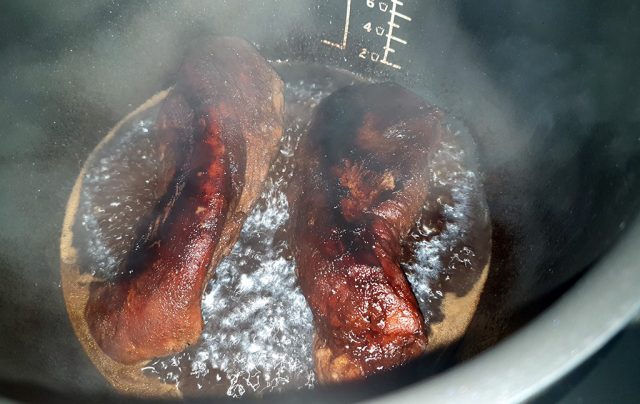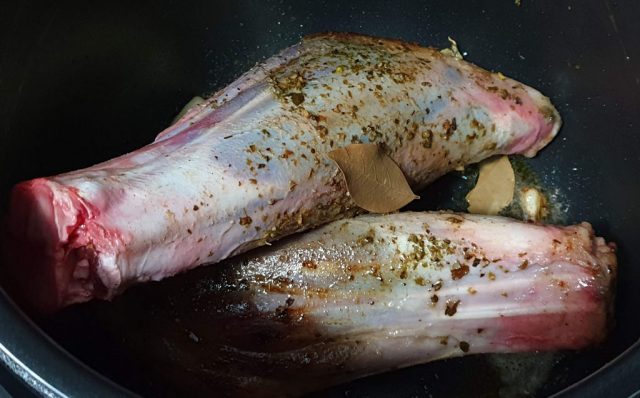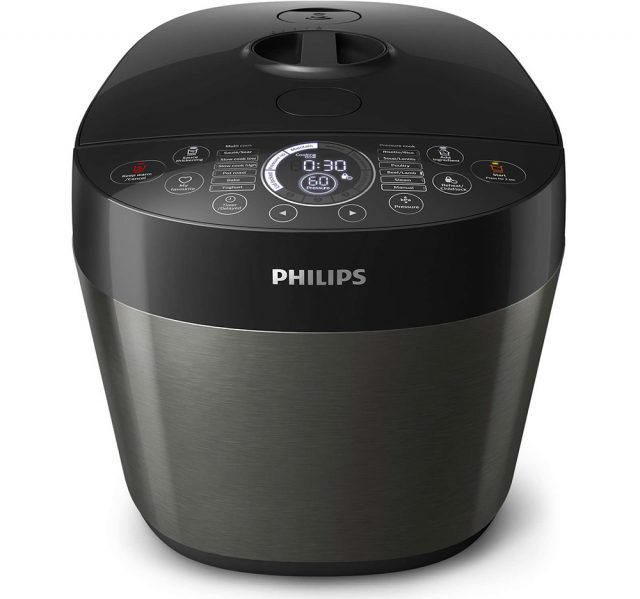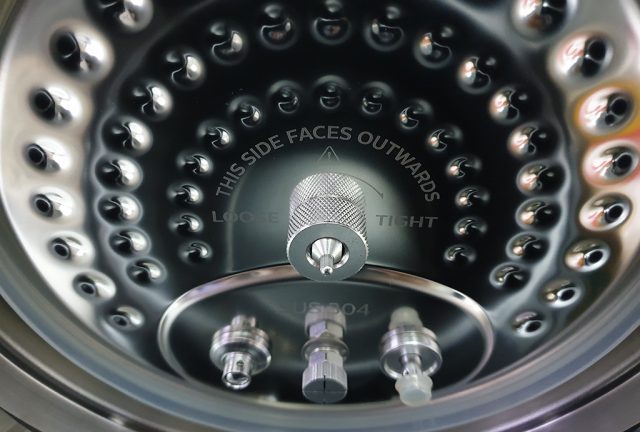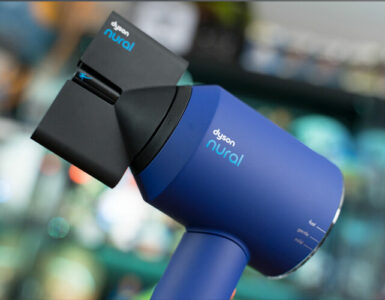All cooks cheat. The professional ones have equipment that grill without a flame, pressure cook their stock, and sous vide their way to great tasting dishes. Homecooks don’t have it that easy, but with the help of the Philips multicooker series, they are well on their way.
It’s called a multicooker because it is able to perform the job of several kitchen appliances, but the basics of the machine is that it’s a pressure cooker that can cut down on cooking time, to produce flavourful dishes that would otherwise take a day to prepare.
It’s about making smooth congee in under an hour, double boiled soup in an instant without the double b
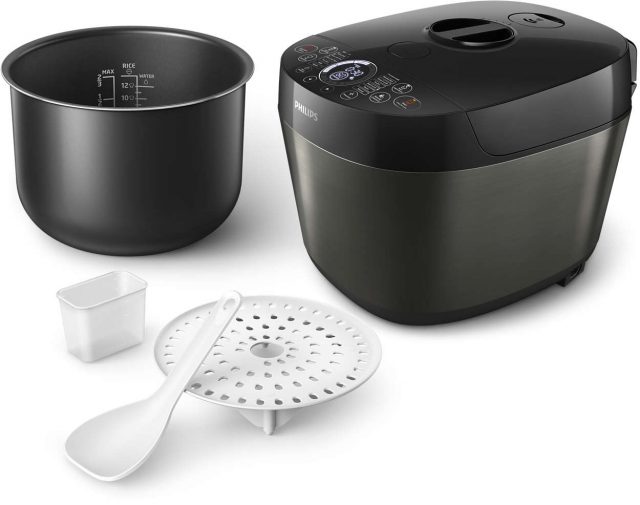 oiling, and whipping up desserts without checking in on it over the stove constantly.
oiling, and whipping up desserts without checking in on it over the stove constantly.
Some in the market have also developed a term for such instant meals – one pot meals. It’s when cooks prepare all the ingredients, add in some preparation time for sauteing or browning the spices and meat, and then adding all the ingredients into the pot, closing the lid, setting the timer and walking away.
If you think about it, the majority of dishes, from soups, curries, stews or congee work the same way, that the front end is all about adding the ingredients, and the rest of the time is leaving it to cook.
Unlike the earlier models from Philips, which look like gold/black versions of the world famous Instant Pot appliance that has the button controls on the front, and a removable lid, the HD2145 looks more like a modern rice cooker – the longish unit has a hinged lid as well as a touchscreen display that manages all the settings.
The biggest difference with this model though, is that the pressure release is now within the multicooker, and not exposed. The end result is a sleek looking machine that looks great in your kitchen, without looking like an appliance.
Here’s the thing – the unit comes with its own cookbook, but many of the dishes are non-Asian. And unlike the previous models, the HD2145 doesn’t come with some Asian setting options, such as Congee. The good news is that the machines itself tend to be the same around the world, so the settings are fixed, but the names listed are interchangeable. Instead of tapping Congee to make the classic Asian breakfast, use Risotto instead.
Because of the brand’s popularity, there are several Facebook groups who have banded together, to talk about local recipes, and alternative settings to prepare Asian dishes, and there is no one way. Sure, the settings can be tweaked, but the recipes differ. The first thing I whipped up was a dish of char siew, and it was amazing.
Marinate the meat, put the meat into the HD2145 and in under an hour, char siew is served. Granted, it wasn’t perfect since the marinade was an estimate based on a recipe from the public, but after using the meat in a fried rice dish, no one could tell the difference.
Next up was congee, and this is where the dish got interesting. The usual way is to wash the rice, toss it into the appliance and turn it on, but there’s another way of marinating the uncooked rice grains with sesame oil, Chinese cooking wine and one century egg. I prepped it the night before, and followed the usual steps.
Now, some home cooks say, set it to Congee/Risotto and double the cooking time. Others say, set it, but run it twice via the Congee/Risotto model, at 20 minutes each. I used the latter method and it is now my go-to method for making great tasting congee. Once the first round was done, opening the pot allowed me to gauge the water level, to see if I needed more. It also gave me the chance to add in mince meat and sliced pork, so that the meat would not be overcooked.
In my second attempt, I added small intestines during the first round, and they came out soft and tender after the second round. There’s also the Saute mode, which heats up the appliance, so that you can add other ingredients into the congee, such as slice fish, scallops and even an egg.
One big difference with this new model is that there is an option to add in ingredients in the middle of the cooking process. I realised that making congee by repeating two rounds of the cooking process and adding ingredients halfway was effectively the same thing – the machine would vent the pressure, allowing you to open the lid. Close it and the machine will build up the pressure to cook the food within.
That lamb shank that would take hours to stew? I tossed in two lamb shanks, a can of tomatoes, corn and mushroom and in an hour, I got one of the most tender bites of lamb on a plate. I even tried making prawn noodle soup with it, so instead of allow the prawn shells to boil for hours, I had great tasting prawn soup in under an hour. For dessert, I made Sweet Barley and Ginkgo Nut Soup, and how much this one pot dish works depends on how you like the dessert.
I like mine like a bowl of thick congee, where every spoonful gets you some barley, ginko nuts and bearcurd. My wife prefers the other kind, where the barley settles at the bottom of the pot and she drinks the soup with the beancurd plus the occasional grains of barley. Since I used the Risotto mode for this, the final version was more to my liking, and not hers.
Once you get the hang of the pre-sets, you can manually tweak the settings, to increase the cooking time and/or increase or reduce the pressure to your liking. The easy to use controls makes this machine an almost fool-proof one.
Because the lid here is a hinged on, the underside of the lid comes with a removable plate and rubber seal/gasket that reveals the pressure release knob. Make sure to clean the lid and its accessories though, as steam travels through it, leaving a fait aroma and moisture that builds up over time if left uncleaned.
And beware the rubber seal – it can only be fitted in one way and a wrong fitting means the lid will never be able to be placed in the lock/sealed position.
One last thing to note before you commit – it’s very easy to read the guides that tell you that meats can be done in 20 minutes but in this review, everything takes less than an hour. This is because all the recommended timings of 15, 20 or 25 minutes is based entirely only on cooking time. Once you seal the pot, it takes some time to build up the pressure before the cooking timing starts. And once the cooking time is done, it takes some more time for the machine to release the pressure. Since the pressure can be anywhere from 10 to 50 units, the slow build-up and release of pressure adds considerable time to the overall waiting time.
Still, making lamb shank or prawn noodles from scratch in under an hour is nothing to scoff at.
The Philips HD2145 retails at S$369 and is available now on Lazada Singapore’s Philips Lazmall.
GEEK REVIEW SCORE
Summary
The HD2145 builds upon a series of successful multicookers from Philips. If you do get one, remember to join the many Facebook groups to get tips and recipes on what to prepare, and how to make the best use of your machine.
Overall
8.6/10-
Aesthetics - 8.5/10
8.5/10
-
Build Quality - 8.5/10
8.5/10
-
Performance - 9/10
9/10
-
Value - 8/10
8/10
-
Geek Satisfaction - 9/10
9/10



